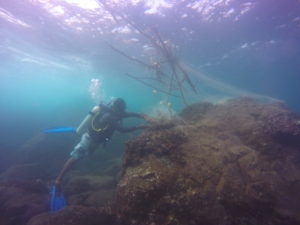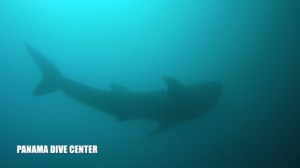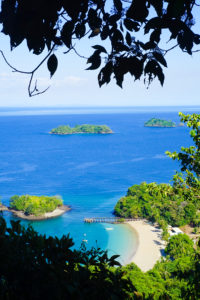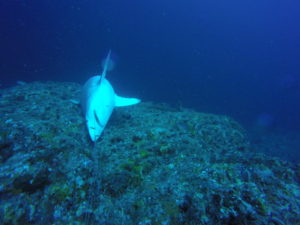Coiba National Park: A UNESCO Site in Danger?
World heritage sites are places whose characteristics set them apart from a merely beautiful scenic site. They are unique and have an intrinsic “Outstanding Universal Value” (OUV) that reflects the wealth and diversity of the Earth’s cultural and natural heritage. Because of their outstanding value, World Heritage sites belong to all the peoples of the world, irrespective of the territory on which they are located. Their protection benefits every single one of us and therefore, it is the duty of the international community as a whole to cooperate in their preservation.
Coiba National park and its Special Zone of Marine Protection (SZMP) were included in the list of Unesco World heritage sites in 2005. It is an area of breath-taking beauty that stirs the heart of its visitors. But apart from its beauty, what makes Coiba special? What is its OUV?
To be included in the World Heritage list, a site has to meet at least 1 out of 10 selection criteria. Coiba meets Unesco criteria (ix) and (x) for inclusion in the World heritage list of natural sites. You can find these criteria and why Coiba meets them here.
In simple words, Coiba holds communities of plants and animals which are essential for the well-being of our entire planet. Coiba is extremely reach in biodiversity, with many of its plant and animal species not found anywhere else in the world. These species in many instances play key roles in processes responsible for the health of our oceans. If we don’t have healthy oceans we are in SERIOUS TROUBLE. This is why Coiba is a World Heritage site and why it must be protected.
The State Parties are countries that adhere to the World Heritage Convention, nominate sites within their national territory to be considered for inscription in the list and have the responsibility to protect the World Heritage values of the sites inscribed. The benefits of joining the list are multiple. It often serves as a catalyst to raising awareness for heritage preservation. It provides access to the World Heritage fund. Sites also benefit from the elaboration and implementation of a comprehensive management plan and experts offer technical training to the local site management team.
The World Heritage Committee consists of representatives from 21 of the States Parties to the Convention elected for terms up to six years. It meets once a year and is responsible for the implementation of the World Heritage Convention. It allocates financial assistance from the World Heritage Fund and has the final say on whether a site is inscribed on the World Heritage List. It also examines reports on the state of conservation of inscribed sites and decides on the inscription or removal of sites on the List of World Heritage in Danger.
The World Heritage Committee can inscribe on the List of World Heritage in Danger properties that face threats to their World Heritage values and once a site has been Inscribed on the List of World Heritage in Danger, the World Heritage Committee can allocate immediate assistance from the World Heritage Fund to the endangered property. The Committee then develops and adopts, in consultation with the State Party concerned, a program for corrective measures, and subsequently monitors the situation of the site. It also alerts the international community so that it can join efforts to save these endangered sites.
All this is important because the World Heritage Committee has warned the State Party of Panama that, should management of Coiba and the SZMP continue in the same direction, the Committee will consider including the site in the List of World Heritage in Danger. In other words, the Committee thinks that the outstanding universal value of Coiba and its SZMP may be in danger.
An IUCN (International Union for Conservation of Nature) Reactive Monitoring mission visited the property (Coiba and the SZMP) from 28 November to 3 December 2016, in order to present conservation issues to the World Heritage Committee. On 30 January 2017, the State Party of Panama submitted a report on the state of conservation of the property. Both reports are available here. You can find a summary of the conclusions and decisions adopted by the Committee in its last decision (Draft decision: 41 COM 7B.17) here. Briefly, the Committee indicated that:
- the management of Coiba’s marine component continues to face significant challenges, with declines having been reported for some key marine values, and with little progress reported in the implementation of the Committee’s requests related to the management and control of fisheries.
- the draft regulations proposed by the State Party include provisions for types of activities that would be incompatible with the World Heritage status of the property, particularly industrial fishing.
Basically, the take-home message is that certain fishing activities are allowed within the park which are absolutely incompatible with the World Heritage status of Coiba and which are having a serious negative impact on Coiba’s outstanding universal value. What is most disturbing and frustrating is that the World Heritage Committee has been repeatedly expressing concerns to the State Party in the past years over the absence of effective fisheries regulations within the property, with apparently little effect. The Committee has repeatedly requested the State Party to take immediate measures to ensure that fishing is strictly controlled and that fisheries permitted within the property are sustainable, guaranteeing that activities such as industrial fishing are not permitted within the property. The World Heritage Committee has indicated that if by its 42nd session in 2018 there has not been substantial progress in protecting the property from unsustainable fisheries, Coiba and its SZMP may be included on the List of World Heritage in Danger.
Although the listing of Coiba as World Heritage in Danger may be perceived as a dishonor, it may actually be a good turning point, focusing international attention on its problems and obtaining expert assistance in solving them. However, we believe the listing of Coiba in the World Heritage in Danger would not be necessary if the State Party complied with requests from the World Heritage Committee. Hopefully, the State Party will take note of the requests and we will soon see major positive changes in the management of Coiba’s marine component. Coiba is a special place, part of our natural heritage and it should be treated as such. Let’s not forget it.
– by Rodrigo Villarino


